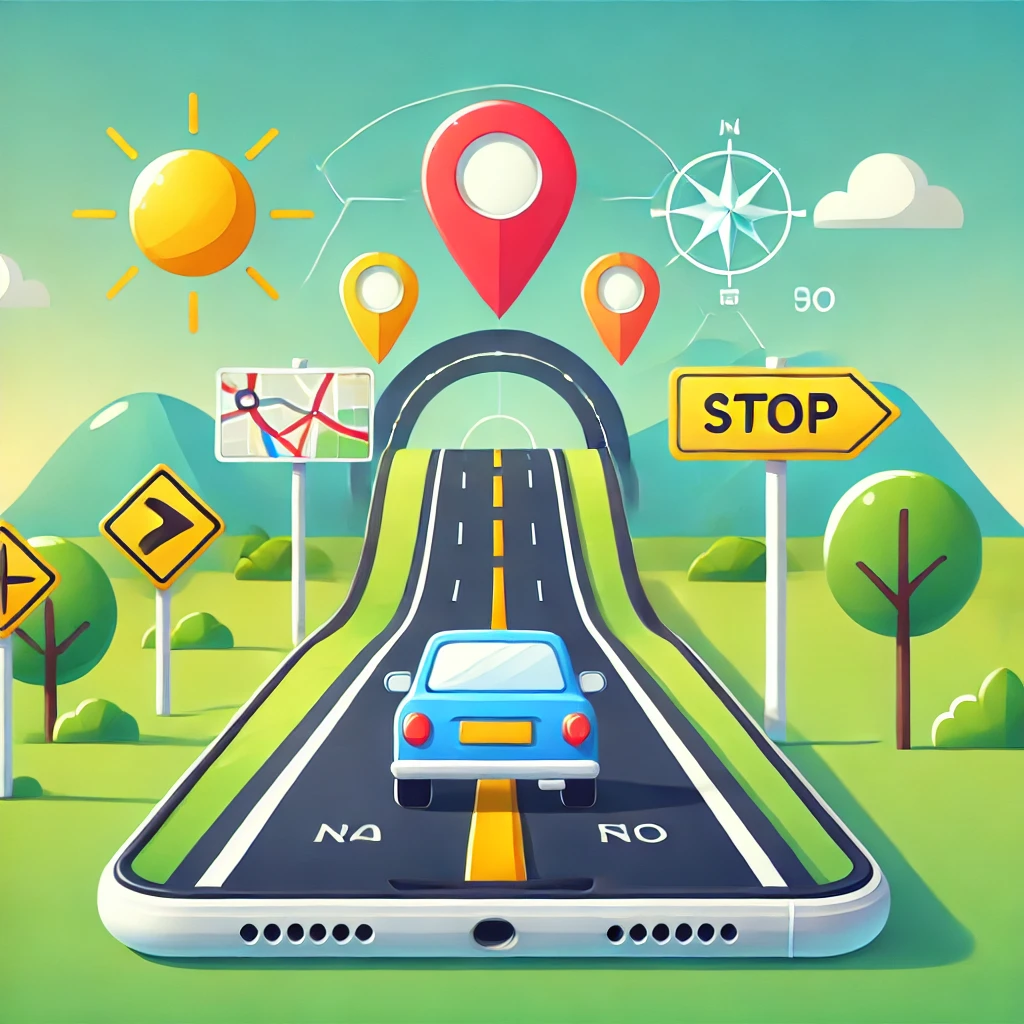Introduction
Getting from point A to point B should be as simple as possible, right? Whether you’re driving across town, to a nearby city, or on a cross-country road trip, having the right driving directions can make a huge difference. In this article, we will explore how driving directions can be made simple and easy to understand. With step-by-step guidance, we’ll help you navigate your journey without stress or confusion.
In the past, finding driving directions often meant printing out maps or relying on paper guides, but now, thanks to the internet, navigating your way is easier than ever. With online maps and navigation apps, you can quickly get precise and up-to-date driving directions to wherever you need to go. No more wondering about road signs, missed turns, or detours—just clear and reliable driving directions at your fingertips.
Let’s dive into how driving directions work and why making them simple is key to a stress-free travel experience.
What Are Driving Directions?
Driving directions refer to a set of instructions that guide a driver from one location to another. These directions can be detailed, providing the exact route, street names, distance, and landmarks, or they can be more general for familiar areas. Today, we get our driving directions through various online tools, including Google Maps, Apple Maps, and other GPS navigation apps.
The aim of driving directions is to make navigation straightforward by providing precise details about where to go and how to get there. Whether you’re driving through a busy city or a quiet rural area, the key to a smooth journey is simple, clear, and accurate driving directions.
How to Get Simple and Easy Driving Directions
The beauty of modern technology is that getting driving directions has never been easier. Here’s a breakdown of how you can get simple and easy driving directions:
1. Use Google Maps
Google Maps is one of the most popular and user-friendly navigation tools. It provides real-time driving directions with live traffic updates and alternate routes. Whether you’re on your phone, tablet, or desktop, Google Maps offers a simple interface where you just input your starting point and destination. It then generates the best possible route with clear driving directions.
To make things even simpler, Google Maps gives you a turn-by-turn guide. So, you can focus on the road while it tells you exactly where to go next. You can even save your destinations for future use, making your future trips quicker and easier.
2. Apple Maps for iOS Users
If you’re an iPhone user, Apple Maps is another reliable app for getting driving directions. Similar to Google Maps, Apple Maps offers step-by-step directions, estimated travel time, and even real-time traffic data. You can also select different route options depending on your preferences, such as the fastest route or the most scenic route.
Apple Maps also integrates seamlessly with other iOS features, making it a great option for those using Apple products.
3. Waze: The Community-Powered Navigation
Waze is another popular navigation app, and it’s unique because it leverages real-time input from its users. Drivers can report accidents, road closures, and other conditions that might affect travel. This helps you get the most up-to-date driving directions, including the fastest routes and detours.
Waze is especially useful for drivers who want to avoid heavy traffic or roadblocks, as it provides alternative driving-directions in real-time.
4. GPS Devices
Though many people rely on smartphones for driving-directions, dedicated GPS devices still offer a great solution. These portable devices are preloaded with maps and provide turn-by-turn driving-directions. GPS devices are especially helpful for long trips where you may not always have a reliable internet connection.
Many GPS devices also include additional features like speed limits, points of interest, and trip statistics.
Why Driving-Directions Should Be Simple and Easy
You might wonder, why is simplicity so important when it comes to driving-directions? The answer lies in the fact that complicated or unclear instructions can make even the shortest trip stressful. Getting lost or taking the wrong route can waste valuable time and fuel, and in busy areas, it can also cause frustration.
Here’s why driving-directions should be as simple as possible:
1. Avoid Distractions
Driving requires focus. Having simple and clear directions reduces the chance of distractions when you’re on the road. Complex directions or too much information at once can be overwhelming, especially in unfamiliar areas.
With straightforward instructions, you can pay more attention to the road and less to your device or paper map.
2. Reduce Stress
Navigating a new city or route can be stressful. The last thing you want is to be confused by multiple unclear directions. By ensuring driving-directions are easy to follow, you reduce the mental burden that often comes with driving in unfamiliar locations.
3. Save Time
Simple directions help you get to your destination faster. The more complicated the directions, the more likely you are to make mistakes or miss turns. By having easy-to-understand directions, you save time and avoid backtracking.
4. Improve Safety
Clear, simple driving directions contribute to better road safety. When the directions are easy to follow, you’re less likely to make sudden turns, abrupt stops, or distracted lane changes, which all contribute to safer driving.
Types of Driving Directions
Not all driving directions are the same, and the way directions are presented can vary depending on the tool you use. Here are some common types of driving directions:
1. Turn-by-Turn Directions
This is the most common form of driving directions. Each step of your journey is broken down into individual turns, street names, distances, and sometimes landmarks. This is ideal for drivers who need precise instructions.
2. Map-Based Directions
Map-based directions provide a visual representation of the route. These directions are useful for seeing the entire journey at once. You can typically click on the map to zoom in and out to get a better sense of the route.
3. Voice-Guided Directions
Many navigation apps, such as Google Maps or Waze, provide voice-guided driving directions. This allows drivers to follow the route without needing to look at the screen constantly. Voice guidance makes it easy to follow along, especially when driving in busy areas.
Common Mistakes When Following Driving Directions
Even with the best tools and the clearest directions, mistakes can still happen. Here are some common mistakes people make when following driving directions:
1. Not Paying Attention to Road Signs
While digital directions are useful, always pay attention to road signs. Sometimes road names or conditions may change, and road signs help you stay on track.
2. Relying Solely on Technology
Technology is incredibly helpful, but it’s not foolproof. Make sure you have a backup plan in case your GPS loses signal or your phone runs out of battery.
3. Misunderstanding Distance and Time Estimates
Sometimes, directions might say “Turn right in 0.2 miles,” but that doesn’t mean you can relax. Pay attention to the distance, and don’t assume the directions are always spot on.
FAQs
1. How do I get the best driving directions?
To get the best driving directions, use reliable apps like Google Maps, Apple Maps, or Waze. These apps provide real-time data and multiple route options for the quickest and easiest path to your destination.
2. Are driving directions accurate all the time?
Most of the time, driving directions are accurate, especially with updated navigation apps. However, traffic conditions, road closures, and accidents can affect the accuracy, so always check for updates during your trip.
3. Can I get driving directions without an internet connection?
Yes, some apps, like Google Maps, allow you to download maps for offline use. Alternatively, GPS devices can give driving directions without needing an internet connection.
4. How can I make sure I’m taking the fastest route?
Apps like Waze and Google Maps provide real-time traffic information. These apps will suggest the fastest route based on current traffic conditions.
5. How can I make driving directions easier to follow?
Use navigation apps that offer voice-guided driving directions. This way, you don’t need to keep looking at your phone. Also, ensure your map is zoomed in to see upcoming streets and landmarks clearly.
Conclusion
Driving directions don’t need to be complicated. With today’s technology, getting simple, accurate directions is easier than ever. Whether you’re using your smartphone, a GPS device, or a map, the key is to make your journey as straightforward and stress-free as possible.
By relying on modern navigation tools, understanding the importance of clear directions, and avoiding common mistakes, you can make every trip smoother and more enjoyable. Happy driving!




